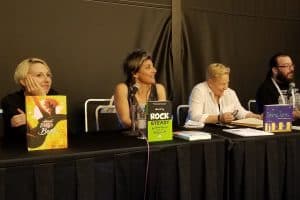
For attendees of the 2018 American Library Association (ALA) Annual Conference and Exhibition in New Orleans, it was a standing-room-only audience June 23 to hear from Alison Head, the founder and executive director of Project Information Literacy. Head recently studied 6,047 students from 17 high schools and colleges to uncover the distinctive characteristics of their information-seeking behaviors. Noted Head, “A lot of people are coming up with solutions, but I wanted to collect a lot of data to see what the problems were.”
The mixed-methods study considered the significant shift towards a preference for online news resources and looked at how students consider authority and currency when seeking information. Head experienced an epiphany when she observed, based on focus groups, that the students “are really different from me and and how I find news.” As a result, Head reframed her research questions.
The open-access report and the survey will both be available soon on the Project Information Literacy website. Early study findings indicated that high school and college students get their news from real-life discussions with peers (93%) and not just from social media (89%). Professors were considered a significant news source as well (70%), but librarians were not as effective as a source of news (7%). However, the role of librarians rose to 15% or 20% if those librarians were embedded or working closely with students and, in fact, peaked when schools offered a course on information literacy or fake news.
Looking at students’ social media use with greater granularity, Head found that this population is no longer on Facebook. “Facebook is dying,” she noted dryly, and students are migrating to SnapChat and Instagram, the highly visual social media platforms. Head characterized this as the “passive nature of news consumption for this generation.” A surprising news source for this population is memes, the humorous text/image combinations that are shared widely on social media.
Another key finding: News gives students a “spark” when they can connect it to their academic work. In effect, they take expertise from their major and test it with the news they heard. That spark helps them see the value of what they hear in a lesson.


